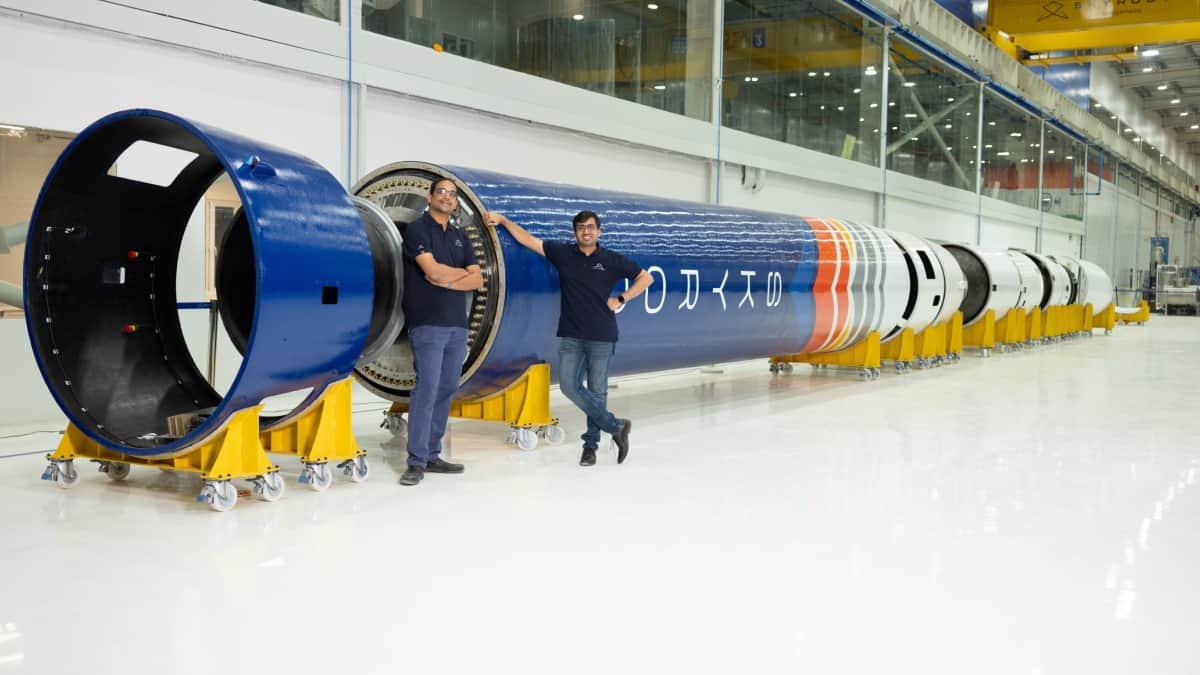In what is arguably a milestone event for the startups in the Indian space arena, Dr Jitendra Singh, union minister Science & Technology, unveiled Skyroot’s Vikram-1 orbital rocket in Hyderabad on Tuesday, October 24th. It is to be the first among the initial developmental test launches by Skyroot with the hoping for a fully commercial launch in the later months of 2024 albeit Pawan Kumar Chandana, the co-founder and CEO of Skyroot, reminds that the first launch of Vikram-1 is already partly commercial.
The company describes ‘Vikram-1’ as a “technologically advanced, multi-stage launch vehicle with payload capacity of around 300 Kg to Low Earth Orbit. It is an all-carbon-fibre bodied rocket which can place multiple satellites to orbit, which will be India’s first in the space sector and first few globally, and features 3D printed liquid engines.” It is planned to be launched in the early months of 2024 making it Skyroot’s second rocket, after the successful launch of its Vikram-S rocket on November 18th, 2022, India’s first privately-developed rocket. With Skyroot and others looking to tap space technology, it is quite a distance traversed since India opened up the space sector to private players in 2020. Vikram-1, very simply, is a scaled-up version of Vikram-S.
On funding, he says, the company has so far raised Rs 526 crore and with this, he says, “we are good for the next few launches as in this Rs 400 crore was raised just a year ago.”
Dr Singh pointing to the early days for space economy felt it is bound to take off and there were estimates globally already of how India could grow in this space. It is today at around $ 8 million but even conservative estimates put the number at $ 40 million by 2040 while some even expect it to touch $ 100 million by then.
The minister also inaugurated the new global headquarters of Skyroot Aerospace in Hyderabad, which again the company is describing as “the country’s largest private rocket development facility under a single roof.” Named MAX-Q, it packs state-of-the-art infrastructure housing integrated design, manufacturing and testing facilities for the building of space launch vehicles, and design space for the 300-member strong workforce of Skyroot. The facility covers a sprawling 60,000 square feet built-up area, with further plans for expansion in the near future. It is designed and built on a futuristic space theme.
With the inauguration of MAX-Q, Skyroot can now boost of four facilities in all with a cumulative built-up area of 100,000 square feet, placing it “among one of the largest rocket development facilities in the private sector globally.”
Chandana says, “every rocket during its travel to space, has to push through a point of maximum stress called ‘Max-Q’. Our MAX-Q headquarters serves as a powerful symbol of our unwavering commitment to pushing boundaries and accomplishing the extraordinary.”
Bharath Daka, Co-Founder and COO of Skyroot says, “our design prowess and cutting-edge home-grown technology have been integral to the creation of Vikram-1. As we eagerly prepare for the early 2024 launch, we will keep sharing further updates on the orbital mission with Vikram-1.”

Leave a Reply